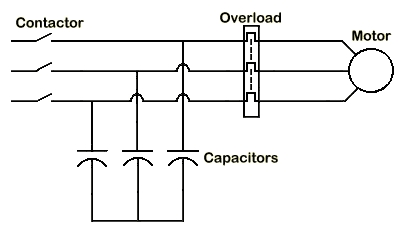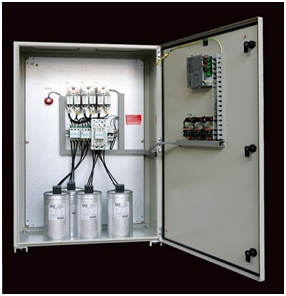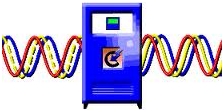Home › Electrical Engineering Forum › General Discussion › Is Power Factor Correction that important?
- This topic has 4 replies, 3 voices, and was last updated 11 years, 7 months ago by
Anonymous.
-
AuthorPosts
-
2013/02/14 at 4:37 pm #10968
Steven Mill
ParticipantThe importance of Power Factor Correction
There is a dynamic shift in our economy pertaining to the emphasis on reviewing energy usage. There is increased impetus towards optimizing the usage and overall efficiency of electrical systems. The message is simple; use is it effectively, rather than using it less.
This is where the discussion of power factor and its bed rock role in any electrical system comes to play. Generically speaking, the power factor is defined as a measure that shall monitor the route of electrical supply via the energy utility company. The higher inductive components a device have, usually the lower its power factor. In mathematical terms power factor equation could be written as follows:
P.F = cosθ = KW/KVA
In the above equation KW is the actual load power and KVA is the apparent power.
In this post, we are going to take a look at how power factor correction could help you at end of the day. The main focus is on the efficient usage and reduction of any wastage. When the load is evenly distributed and the electrical efficiency is sorted out, the durability of your devices is also being catered to. The basic principle is that we have provided the right electrical energy balance to the devices and avoid transitions in the form of fluctuations.Power Factor Correction
To begin with, one of the methods for power factor correction is the Bulk Correction. In this case we have independent control over capacitors via individual starters.
The following image shows how bulk correction is implemented.
As a similar extension, we have the notion of Static Correction. This deals more with the lagging current issue and also the magnetizing current. The method here involves the connection of correction capacitors to the motor starters. Via the connection, we have control over the state of the capacitors. So you are saved from the cost of any monitoring equipment.
How to Keep Power Factor Close to Unity?
The application of capacitors has been widely seen in the case of industries as a compensating effect for power factor. The objective is to have the power factory close to unity to maximize usage potential. Simply speaking a power factor correction device (PFCD) is a need of the hour solution for the masses at large. This functions on the level of prevention of heating up and also protection against voltage surge. It is quite possible for you to use this device for recycling electrical energy for usage. It is not only the user that is benefitting but also the supplier, since there are now reduced chances of power failures via power surges or similar issues.
The usage of such corrective measures has increased since we have had an overshoot in the home energy auditing model. Statistics infer that it is possible for you to make savings in the range of 10-20%. For average industry usage with medium production capacity, this is similar to a monthly saving of $400 or more!
While the concept of power correction has been around for quite some time, it has expanded with the development of IT. We now have algorithms ideally suited for power management software. There is more automation with microcontroller technology. With customizable options like commercial and industrial temperature range, it has diverse applications. Just imagine the fact that by reducing the temperature of your machines, you are basically doubling their lives.
All this ground being laid, let’s focus on consumer statistics. The most common fuel source for energy production across the globe is oil. The catch is that generating electricity from oil is a mere 42% efficient. It is a matter of simple arithmetic that why we need power correction system to achieve maximum power with minimal line/heat losses. If corrections are applied, there is an approximate 10% reduction in electrical consumption.
Power Factor Correction Devices a Brief Overview
Among the devices that are available for consumer usage in this regard we have the Power Factor Correction Device (PFCD). It has been ideally constructed to keep surges in check while monitoring the working temperature as well. The beauty of this system is that it has been converted to a compact unit. It is a solid recycle machine for your waste electricity. With two tier benefits, this design is a must have in your electrical supply blueprint.
Another related device is the Power Planner II. This is preferable at larger scale but can be used for domestic purposes too. To its testimony it has been able to check out for efficient working capacity against a number of devices. Each time the power factor deviates beyond the normal range it has been restored and electrical utilities have been saved from getting penalized for supplying excessive currents.
P.Q.E .Ltd. has designed several different classes of its Power Factor Correction devices to cater the needs of its customers. These devices include:
- Low Voltage Power Factor Capacitors
- LV Capacitor Banks
- High Speed Power Factor Correction
The selection of these devices depends on the consumer & on its load features i.e. how aggressive or passive the load actually is. The more aggressive loads might demand high speed power factor correction as they might not be corrected with the conventional Low Voltage Power Factor Capacitors.
Yet another device with the name of Electro Flow is introduced recently in US market by GEU (Global Energy United). Electro Flow increases power quality and has the capability to increase energy savings up to 34%. Holistically, this increases the life of the system at which this device is installed.
It has a simple 3 staged working principle:
- Power factor is increased by creating a balanced system thus the KVAR of RLC tank is efficiently utilized
- Due to Electro Flow’s capability of self-balancing the three phases; the power triangle component i.e. (KW, KVA & KVAR) are mitigated resulting in an increased power factor
- Power factor is further increased by reducing the effects of harmonics on the system
The whole purpose of this 3-staged topology is to utilize the three-phase capacity (KVA) which could have been wasted in cases where such devices are not installed.
What’s more to Come?
In the concluding remarks it is important to add that it is still needed to take a deeper insight into the inner working science of these devices. They shall be covered later, and provide a causal link with what we have discussed here. This section covers the holistic take on the power factor correction dogma.
Otherwise, to the question “Is Power Factor Correction that important?” I think that we all agree that the answer is “Definitely!“.
2013/02/17 at 11:26 am #13085Anonymous
Guest@Rudi: The sentence simply means that using PFCD is a must for the majority considering the fluctuation issues we have. Makes perfect sense.
2013/02/17 at 2:23 pm #13086Anonymous
Guestnice post,thanks.
I enjoy it.2013/02/21 at 10:13 am #13091Spir Georges GHALI
ParticipantDear Mr. Steven ;
Refer to the connection’s schematic diagram of the Capacitors to a motor, please note that this connection is not too much used, especially for medium and big Motor’s Power, because it may be cause a risk of “ Self Excitation ”, therefor to avoid that phenomena, we should either change the connection way by using another contactor to supply the Capacitors where the closing of it should be done a few seconds after the transient running state and opining with the main contactor, or take into consideration of the following conditions :
Ic ≤ o.9 x Io
Qc ≤ 2 x P ( 1 – Cosφ )
2013/07/09 at 7:09 am #13320Anonymous
GuestPower Element Static correction is usually looked at as the actual percentage involving the practical strength (kW) on the entire strength (kVA) ingested by a service regarding AC electrical equipment. Power Element Static correction is really a way of measuring exactly how efficiently your electricity is usually become practical electrical production.
-
AuthorPosts
- You must be logged in to reply to this topic.





